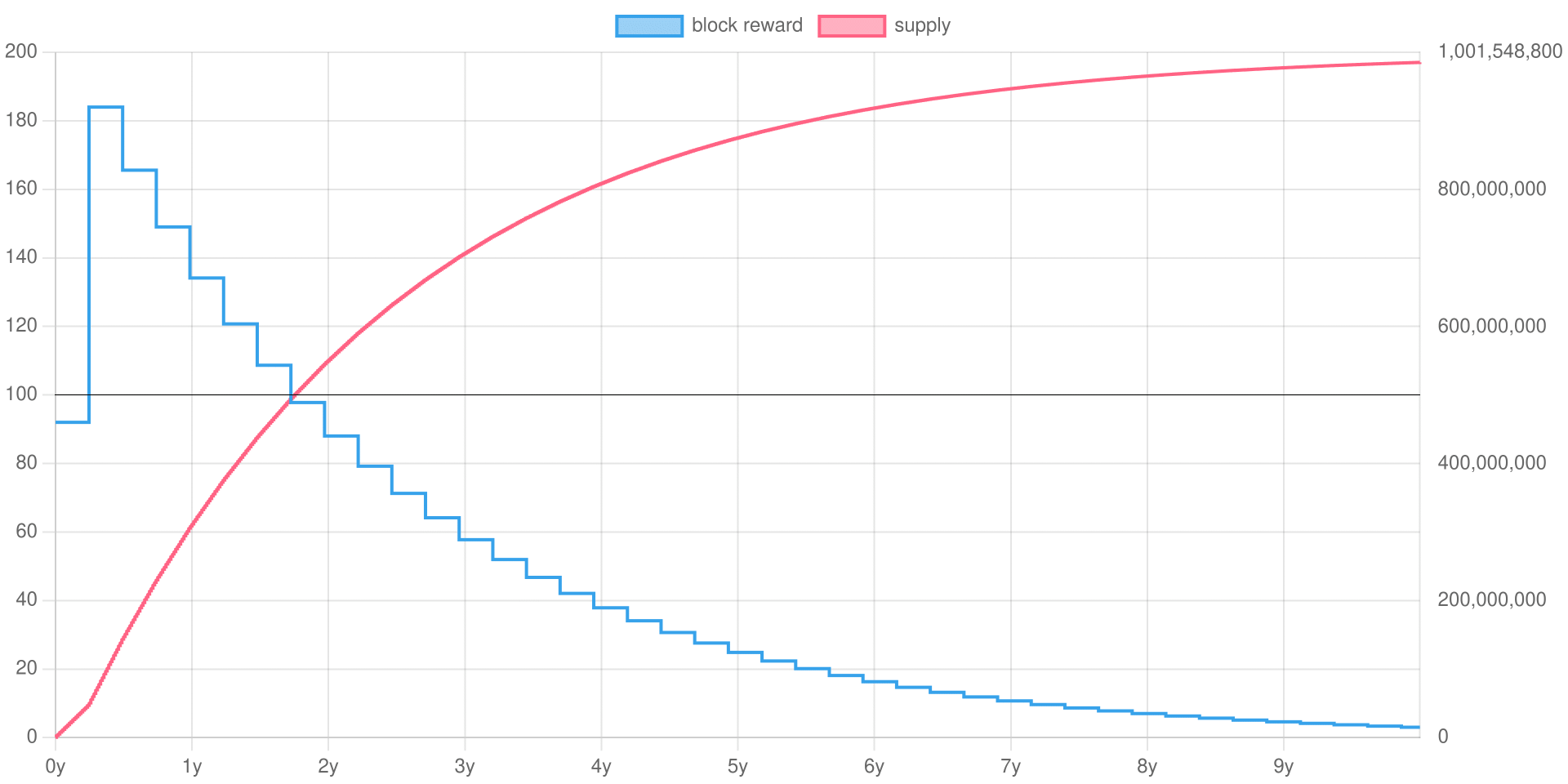Supply schedule
The emission schedule of the Virel Protocol is the product of significant research, in order to balance three core principles critical for a healthy blockchain ecosystem:
- Fairness: Promoting an equitable distribution of the total supply and preventing excessive accumulation by early participants.
- Security: Ensuring robust block rewards persist long enough to secure the network during its vulnerable early growth phase.
- Sustainability: Rapidly reducing supply inflation to a minimal, sustainable level for long-term stability.
With a fixed total supply of 1,000,000,000 VRL (one billion), Virel employs a unique and gradual emission model to achieve these goals.
A Smooth, Predictable Decline
Unlike Bitcoin’s abrupt “halving” events, Virel’s block reward decreases smoothly by 10% every season (91 days). This design provides miners with a more predictable and gradual reduction in income, encouraging consistent mining activity and enhancing network security.
Key features of the emission schedule include:
- Initial Block Reward: 175 VRL per block (with a 15-second block time, resulting in approximately 1 million VRL mined daily).
- Development Fee: 10% of each block reward is allocated to fund ongoing development of the protocol.
- Initial Stability Period: To mitigate early supply centralization, the first reward reduction is delayed. The block reward remains at 175 VRL for the first six months (two seasons), providing a stable launch period.
- Regular Reductions: Starting from the sixth month, the net miner reward decreases by 10% every season thereafter.
Supply Distribution Timeline
This emission curve is designed to distribute the supply quickly to achieve a broad and fair launch, while still maintaining incentives for miners for years to come.
- ~82% of the total supply will be mined within the first 4 years.
- 50% (500 million VRL) will be mined after approximately 608 days (1 year and 8 months).
- 75% (750 million VRL) will be mined after approximately 1,206 days (3 years and 4 months).
This accelerated distribution compared to Bitcoin (which had only mined 50% of its supply in the first 4 years) helps decentralize ownership from the outset, while the long tail of emissions continues to reward miners securing the network far into the future.
 Visualization of the Virel emission curve and cumulative supply over time.
Visualization of the Virel emission curve and cumulative supply over time.